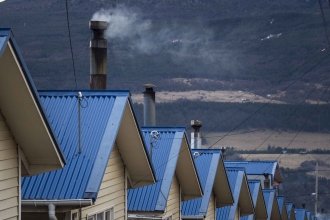Network analysis: a novel approach to identify PM2.5 hotspots and their spatio-temporal impact on air quality in Santiago de Chile
Air pollution, particularly PM2.5 particulate matter, is a significant issue in Santiago, the capital of Chile. Santiago’s pollution problem is exacerbated by its unique geographic location nestled against the Andes mountain range in the central valley of Chile. This paper uses network models that were developed primarily to analyze systemic risk in the financial system to identify those locations in the city that are most important for explaining PM2.5 levels.

